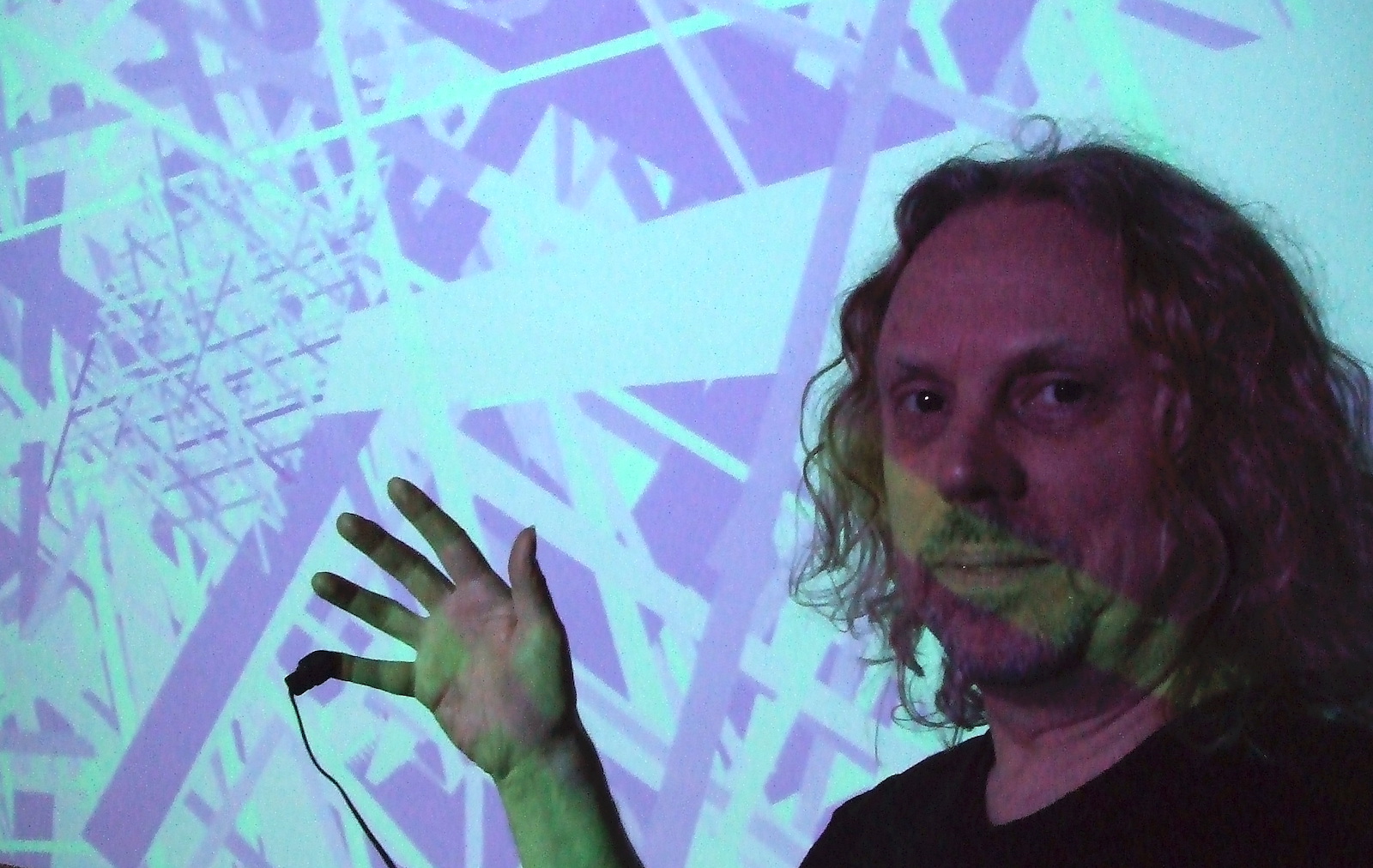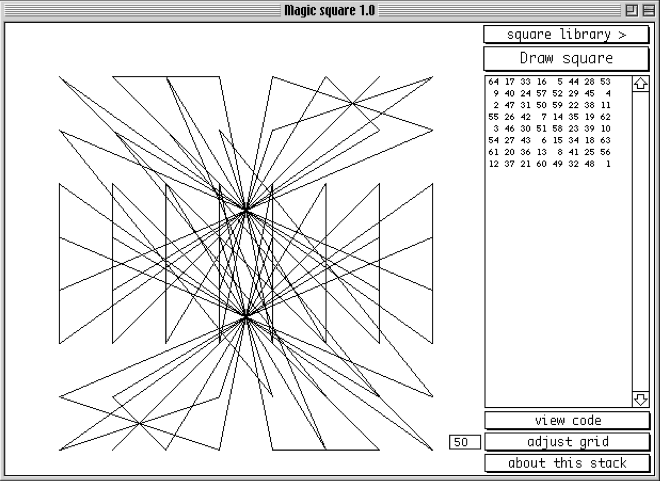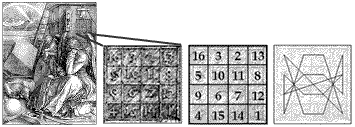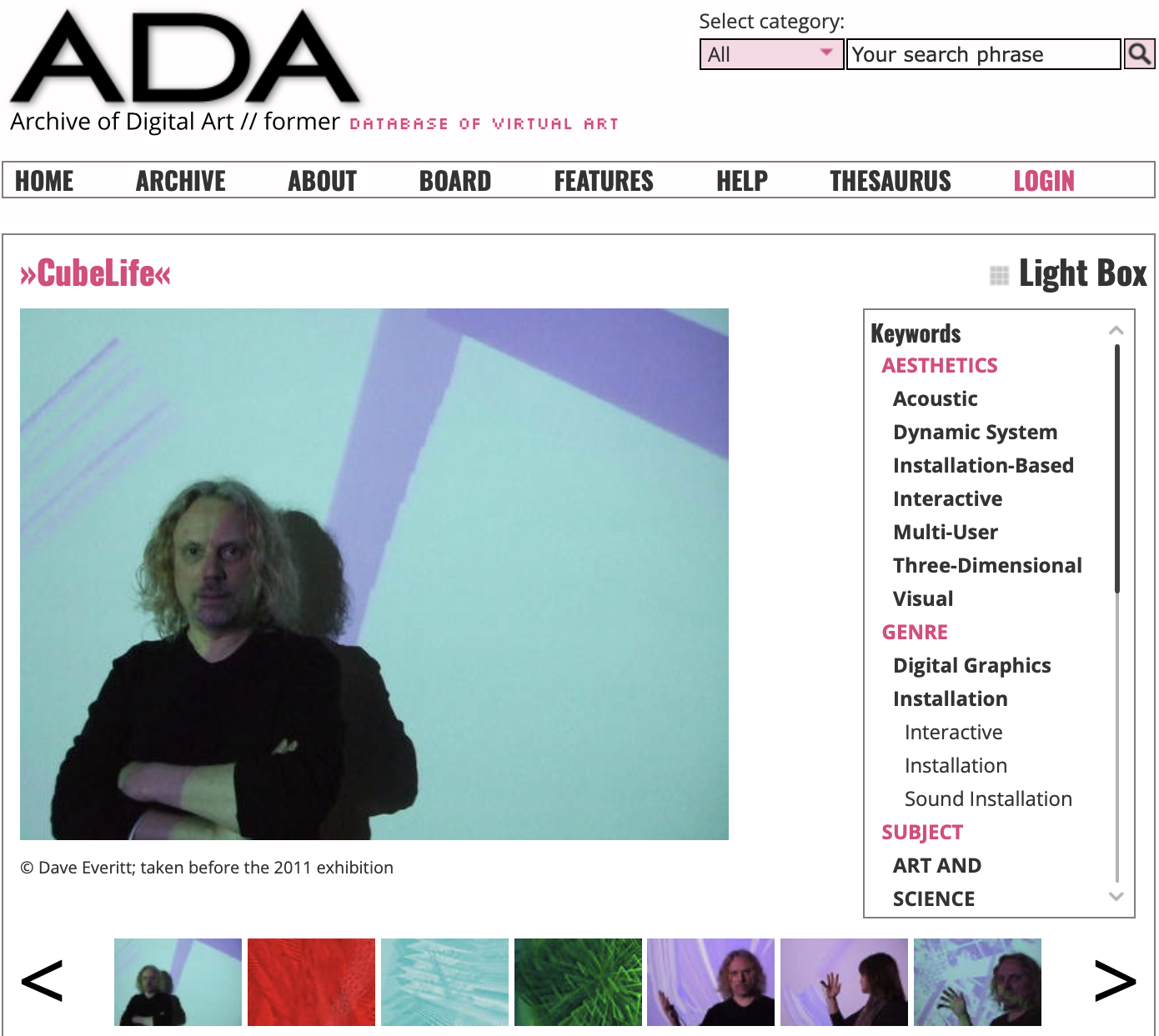

When I first returned to making art in 1996 after a gap of around 15 years (I had suspended coloured drawing for writing between 1985-1996) I thought about creating a multimedia piece based on some of the written material I’d then working on—drafts of written work as a mutating image with the text as a spoken soundtrack; starting off garbled but gradually becoming clearer, accompanied by a montage of the environments in which I worked, with clickable details (I still like the idea). But I was aware that new digital art (known as “media art” for awhile) was already being produced in two main formats: multimedia work with strong personal content, and impressive Shockwave, Flash or early JavaScript web material with high graphic content often referencing the machines on which it was created. I didn’t want to work in a similar way, so decided to explore the roots of art-technology, while picking up some threads lingering after my Fine Art degree, parts of which which used the mathematical patterns of magic squares. I only later discovered the late Vera Molnár’s work that used the same patterns, long before I started! This work has expanded into more mathematical areas too (see this presentation to Symmetry 2021), and into a magic square webapp created with my wife Fania. Our first paper based on this work “Creative Visualisation of Magic Squares” is published in the Proceedings of EVA London 2020.
When exhibited, the cubeLife screen is blank, only starting with audience input via a heartbeat monitor. Each participant creates a new magic cube and sound in virtual 3D space from a heartbeat monitor (finger clip or later wireless hand grips). With a finite life, the cube travels about the space leaving tracks and combining its sound with the cubes of others, building a non-repeating audio presence. Each cube eventually dies, leaving only tracks. The whole represents the collective heartbeats of every participant. The static screen shots capture only a partial range of visuals from the work.
While searching for a structure and a medium, I received timely exposure to some of the origins of digital art practice, in the form of two seminars hosted by Loughborough University’s then-active Gallery of the Future. One was by the late Harold Cohen, who—using the programming language Lisp as a medium (when I naïvely asked why, he said it was good for Artificial Intelligence)—is an example of how computer science and art can interact (he programmed his machine AARON to create and colour paintings in his own style. Harold Cohen’s process is covered here). In the other seminar Paul Brown described how he adapted the ABC of artificial life theory to create evolving images. At the time, it was also encouraging to me personally that both—like myself and many other digital artists—preferred Apple machines for personal use (while other platforms drove parts of Harold Cohen’s work) and that they’d pursued their work with impressive consistency. After this exposure, I trawled the web to find out what was being shown online (and incidentally discovered a now-dead review in Wired News of a 1997 New York show based on artist-modified vintage 512K Macs, as a comment on their digital art pedigree) and read many of the then-sparse publications on the subject.

At that time I was beginning to combine the several components of my life: creativity, amateur mathematics and computer skills. I was familiar with the fundamentals of programming logic, having cut my teeth on Apple’s venerable (and sadly discontinued) rapid application development environment (RAD) Hypercard and it’s HyperTalk language, the syntax of which also prepared me for other languages. I was also familiar with the basics of artificial life, certain mathematical patterns, and the images that can be formed from these. At the time Java was an emerging language, solved the cross-platform problem in one go, and (sadly no longer) worked on the web. I also wanted to explore a “proper” language by collaborating with a far better programmer (Greg Turner), since scripting or RADs (like Director/Lingo, and x-talk languages like HyperTalk) then had limits, although the Hypercard programme (image, right) I wrote to research and test magic square patterns was a useful research tool (I wanted to port it to Live Code, then “Runtime Revolution” but JavaScript eventually won out). Custom code, during the process of creating, allows for a more open, non-standard approach to computing, and I didn’t like the idea of being constrained by the limits of commercial software. The heavy lifting was done by Greg Turner as part of his Masters. Once development of cubeLife really began, my skills only took me so far—my role was to guide the logic and overall intent and process. This is covered in the 2002 edition of Explorations in Art and Technology by Linda Candy and Ernest Edmonds, who ran various supportive projects within the HCI department at Loughborough Uni.
After listening to Harold Cohen and Paul Brown I could see that working as an artist directly in a programming language offers the optimum amount of control over the computer as a medium—I can create my own tools, to use the way I want. Anything I can’t create with my own skills, I develop in collaboration. As with the laziest use of AI now, work generated by commercial software can look assembled, not created, just as image manipulation tools like Photoshop contain a lot of baggage that remains visible in the finished work. The clever stuff in the code of a standard application can warp the path of the creative process. The recent rise in the use of AI-generated images has therefore created a new swathe of critical concerns.

The interpretation of number pattern in cultural symbolism provides a rich resource, offering connections between apparently disparate material—for instance between Leibniz’s binary numbers and the Chinese I Ching. As another example, Albrecht Dürer’s Melencolia I contains the first known representation of a magic square in European art, and Dürer’s straddling of the mathematical and artistic worlds offers an early example for contemporary art-science crossovers. His famous engraving also hints at the lost Renaissance view of melancholy as a portal to inspiration, explored fully in Frances Yates’ pioneering book The Occult Philosophy in the Elizabethan Age. The body of thinking behind the general cultural use and integration of mathematical forms is a long-standing interest which is also covered under the CubeLife.org project.
As well as the artistic and cultural sources informing cubeLife, I am also interested in the mathematics. I’ve become mildly serious (for a non-mathematician, anyway) about number theory and combinatorics, two branches of pure mathematics that can be used as tools to examine magic squares and cubes. During a separate residency at Loughborough University’s computer science department in the early 2000s, I began working with programmer Simon Nee to construct a tool in C++ to examine magic square structures (code became a casualty of busy schedules and reorganisation, but the thinking continued), initiated communication with some of the web’s magic square specialists, and made some minor explorations, which—with the help of the magic square webapp with my wife Fania—are now coalescing into a body of work on the topic.

At Loughborough around the early 2000s, working as an artist in an HCI department meant I could pursue ideas in computer science that explore unconventional interfaces to computer-driven art (there were other projects with Mike Quantrill that used Silicon Graphics machines, including a movement sensor grid, and other public work under the EmergencyArtLab). The idea behind the single heartbeat-only input to cubeLife is to facilitate a warm and instant biological connection to an otherwise cool mathematically-based structure. I liked the idea of bridging the schism between digital space and meatspace in a direct physical way, without resorting to a standard interface—everyone alive has a heartbeat—so as far as audience input goes, cubeLife aimed to be the most widely accessible work possible.
In fact, my research so far indicates that the exhibited version of CubeLife in 1999 was actually the first heartbeat-driven interactive artwork, so I took some time to document in at the Archive of Digital Art.
Because each object in the virtual 3D space has a finite life granted by the data provided by each participant’s heartbeat, and weill eventually die, some variations are possible. As of version 2 (around 2010), more of these have been added as options by collaborator Greg Turner, including flocking.
Including wider research into magic matrices, cubeLife is therefore a long-term project and may (or may not) develop further in ways I can’t foresee according to collaboration, ongoing research and emerging technology. The latest iteration (2010) uses hand-grip heartbeat monitors, as the original clip stopped functioning. the intention is to restore this functionality with the original 1999 code for archival purposes.
There’s more information and some gallery images at cubelife.org, as well as the current allied magic square research that provided the foundation for cubeLife back in the 1990s.